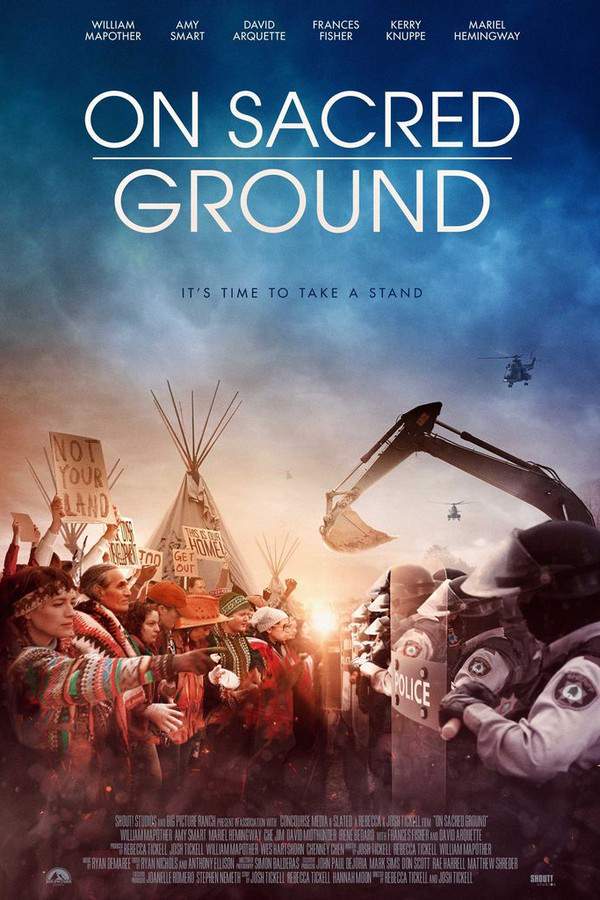
Lakota Woman: Siege at Wounded Knee
Year: 1994
Runtime: 100 mins
Language: English
Director: Frank Pierson
Mary Crow Dog, raised in a destitute Lakota family on the Pine Ridge Reservation in South Dakota, becomes drawn into the 1960s protest movement. Witnessing systemic oppression, she joins her people’s fight for sovereignty, culminating in the 1973 armed standoff at Wounded Knee, the site of the 1890 massacre.
Warning: spoilers below!
Haven’t seen Lakota Woman: Siege at Wounded Knee yet? This summary contains major spoilers. Bookmark the page, watch the movie, and come back for the full breakdown. If you're ready, scroll on and relive the story!
Lakota Woman: Siege at Wounded Knee (1994) – Full Plot Summary & Ending Explained
Read the complete plot breakdown of Lakota Woman: Siege at Wounded Knee (1994), including all key story events, major twists, and the ending explained in detail. Discover what really happened—and what it all means.
Mary Crow Dog grows up in a poor Lakota family on the Rosebud Reservation in South Dakota, where the pull between ancient traditions and harsh modern realities shadows her childhood. The film follows a young girl who learns the stories and rites of her people, many of which are passed down by her grandfather, Fool Bull. His memories of the 1890 massacre at Wounded Knee haunt the family and remind viewers of a past that refuses to stay buried. The atmosphere of poverty, resilience, and cultural memory frames every step of her early life, and the ties to her homeland—and to the elders who keep its memory alive—stay with her as she grows.
Her path takes a sharp turn when she is sent to a rigid institution, the St. Tristan Boarding School, alongside her sister Barbra. The school becomes a crucible where language, tradition, and identity are pressured to yield to an assimilation that wants Lakota culture erased. The harsh routine, the suppression of language, and the erasure of ancestral memory unfold day by day, shaping Mary’s sense of self and her place in a world that often treats Native people as outsiders.
The years passed as they tried to turn us from Lakota to white. They took away our language, the words of our elders about the history of our people and our memories grew dim. They took away our souls every day and they took our pictures once a year.
As the years drag on, Barbra decides to run away, leaving Mary to face the uncertain present alone. Yet even as the family fractures, a spark of defiance begins to glow in Mary. Her worldview shifts when she receives a newspaper from a young white girl named Nadine. The paper, AMERICANS BEFORE COLUMBUS!, exposes the violence of colonization—the rape and looting that have marked Indian lands for generations. This discovery inspires Mary to act: she takes up the cause, prints out papers that urge Indian people in boarding schools to reject the white man’s ways and reclaim their land, and finds herself at odds with the teachers who expel her for it.
Having been expelled, Mary returns to the larger world and searches for a way forward. She goes to the Oglala Tribal Office in Pine Ridge, hoping to find work, accompanied along the way by her Aunt Elsie Flood, Casey Camp-Horinek. But the doors are closed, and racism blocks her path. She goes on a personal odyssey, seeking her mother, who is living in the white world with a white partner, a reminder of how entrenched discrimination remains in the community and beyond. When job prospects vanish, she hops a ride with two Native men, only to endure a chilling moment when the passenger attempts to rape her. She escapes, and soon a rescuing figure appears: Webster. Webster’s pickup and his crew offer a fleeting sense of belonging, and Mary finds herself drawn into a drifting life that drifts as aimlessly as the road they travel.
Her edge sharpens after a near-fatal collision with a train, a turning point that pushes her toward a new path. She chooses to join the American Indian Movement and, alongside Carter Camp as an AIM Warrior, she becomes part of the 1973 Occupation of Wounded Knee. The occupation is portrayed as a tense, precarious stand against authorities and a stark confrontation with centuries of injustice. The movement receives support from fellow tribe members and Vietnam Veterans, even as they are hunted by police who occasionally snipe at them from the shadows.
Throughout this turbulent period, Mary discovers she is pregnant, adding a personal dimension to the political struggle. The occupation tightens around her as the standoff intensifies, and the film chronicles the real danger and determination that defined those days. The narrative does not shy away from the risks faced by Mary and her comrades; it presents the fear, the courage, and the relentless sense of purpose that fueled their actions.
In the end, the siege at Wounded Knee culminates with the police reclaiming the town, and many participants—including Mary—being arrested. Yet even as the authorities close in, the film frames the confrontation as a meaningful act of resistance: a reclamation of voice, land, and identity that could not be easily erased. The story closes on a note of hard-won momentum and the enduring belief that standing up for one’s people can alter the course of history, even when the immediate outcome is fraught with pain and consequence.
Last Updated: October 09, 2025 at 12:37
Unlock the Full Story of Lakota Woman: Siege at Wounded Knee
Don't stop at just watching — explore Lakota Woman: Siege at Wounded Knee in full detail. From the complete plot summary and scene-by-scene timeline to character breakdowns, thematic analysis, and a deep dive into the ending — every page helps you truly understand what Lakota Woman: Siege at Wounded Knee is all about. Plus, discover what's next after the movie.
Lakota Woman: Siege at Wounded Knee Timeline
Track the full timeline of Lakota Woman: Siege at Wounded Knee with every major event arranged chronologically. Perfect for decoding non-linear storytelling, flashbacks, or parallel narratives with a clear scene-by-scene breakdown.

Characters, Settings & Themes in Lakota Woman: Siege at Wounded Knee
Discover the characters, locations, and core themes that shape Lakota Woman: Siege at Wounded Knee. Get insights into symbolic elements, setting significance, and deeper narrative meaning — ideal for thematic analysis and movie breakdowns.

Similar Movies to Lakota Woman: Siege at Wounded Knee
Discover movies like Lakota Woman: Siege at Wounded Knee that share similar genres, themes, and storytelling elements. Whether you’re drawn to the atmosphere, character arcs, or plot structure, these curated recommendations will help you explore more films you’ll love.
Explore More About Movie Lakota Woman: Siege at Wounded Knee
Lakota Woman: Siege at Wounded Knee (1994) Scene-by-Scene Movie Timeline
Lakota Woman: Siege at Wounded Knee (1994) Movie Characters, Themes & Settings
Lakota Woman: Siege at Wounded Knee (1994) Spoiler-Free Summary & Key Flow
Movies Like Lakota Woman: Siege at Wounded Knee – Similar Titles You’ll Enjoy
Lakota Nation vs. United States (2023) Complete Plot Breakdown
Woman Walks Ahead (2018) Spoiler-Packed Plot Recap
On Sacred Ground (2023) Film Overview & Timeline
Bury My Heart at Wounded Knee (2007) Full Summary & Key Details
Son of the Morning Star (1000) Film Overview & Timeline
The Legend of Walks Far Woman (1980) Story Summary & Characters
Powwow Highway (1989) Movie Recap & Themes
Battle of Little Bighorn (2020) Story Summary & Characters
Sioux City (1994) Detailed Story Recap
Cheyenne Warrior (1994) Plot Summary & Ending Explained
The Great Sioux Uprising (1953) Film Overview & Timeline
The Great Sioux Massacre (1965) Full Movie Breakdown
Stolen Women, Captured Hearts (1997) Plot Summary & Ending Explained
UnBowed (1999) Complete Plot Breakdown
Chief Crazy Horse (1955) Movie Recap & Themes

















